
Wardrop Openshaw Muir (22 June 1878 – 9 June 1927) was a British photographer, journalist, editor, and author, known as Ward Muir.

Wardrop Openshaw Muir (22 June 1878 – 9 June 1927) was a British photographer, journalist, editor, and author, known as Ward Muir.
Muir was born in Waterloo, Lancashire, the younger son of the Rev. J. J. Muir, a minister of the Waterloo Presbyterian Church of England, and his wife Sarah Openshaw Clapperton, both born in Scotland. His older brother and sister had also been born there, and his father had previously served as a minister in St Helier, Jersey. [1] [2] The young Muir was educated at Merchant Taylors' School, Crosby, and Brighton College. [3]

Muir was given his first camera by a Scottish clergyman, [3] and by 1894, while still at school, was a committee member of the Waterloo Social Camera Club. [4] In 1895, he gave a lecture to the club on "Reminiscences of Scotland", illustrated by magic lantern slides. [5]
After leaving school, Muir matriculated at Liverpool University, but soon after that his health broke down, due to a lung disease, and he was ordered to go to Davos. While there, he started writing stories for boys and met an editor of Northcliffe newspapers. This led to a job at Carmelite House in Fleet Street, working on women's magazines. His publisher later commented "Heaven only knows how many pseudonyms he must have adopted here, but I believe his nerve deserted him when it came to the fashion hints." [3]
After travelling in France, the Low Countries, Italy, and Austria, about 1898 Muir began selling photographic work to magazines. [3] In March of that year, he joined the Cyclists' Touring Club from an address in Waterloo. [6]
Muir became active in the Practical Correspondence College, which taught how to make photography pay. [3]
In 1902, Muir's father died, while on a visit to Scotland, leaving an estate valued at more than £6,000, [7] equivalent to £726,141in 2021. His mother died in Edinburgh in November 1914. [8]
At the age of twenty-three, Muir settled in London as a freelance journalist. [3] His photographs and writing appeared in the magazine Camera Work in its first year, 1903, and were still appearing there in the summer of 1914. [9] He took long breaks from work to travel, covering all of Europe, apart from the Balkans and Scandinavia, also visiting Egypt and North America. [3] It was later reported that he had been "compelled to travel throughout a good many years of his life as a means of fighting the lung disease which eventually killed him." [10]
Muir's novel When We Are Rich (1911) is a tale of Bohemian art student life, with "a fascinating flirt, a delightful old maid, and a generous baron". [11] His next novel, Cupid's Caterers (1914) mocks the business of women's magazines, through a fictional one called Honeysuckle. It also has hard words for the profession of journalism. A review of the book in The Spectator notes the line "in its way, a Spectator article is no more difficult than a Honeysuckle one. [12]
During the First World War, Muir made several unsuccessful attempts to enlist in the army, but in 1915 was accepted as a private into the Royal Army Medical Corps, [3] joining up with a group of artists and writers from the Chelsea Arts Club. [13] He served as an orderly with his artist friends Francis Derwent Wood [14] and C. R. W. Nevinson, working at the Third London General Hospital at Wandsworth, where he established a magazine, "Happy Though Wounded". [3] In Observations of an Orderly (1917), Muir wrote of wounded soldiers arriving from the theatres of war and "the spontaneous geniality of the battered occupants". This book was followed by The Happy Hospital (1918). Muir was promoted to Lance Corporal [15] [16] and ended the war serving on the Italian front. [3]
In 1919, Muir wrote a series of memoirs for The Amateur Photographer , under the title "Photographic Days". Also in 1919, the publisher Ivor Nicholson wrote a complimentary two-page article about Muir which appeared in The Bookman . He noted that "Ward Muir is a really expert photographer and is one of the very few men who have succeeded in writing interestingly about photography." [3]
In October 1920, Muir was reported to have suffered a breakdown in health, due to over-work, soon after completing a book of short stories, Adventures in Marriage. This led to a long stay in Switzerland to recover. [17]
After his return, Muir worked as a writer and photographer for The Amateur Photographer. His weekly column "Critical Causerie" appeared under the pen name of "The Bandit", but he was still in poor health. [18]

In 1924, Muir's story "The Reward of Enterprise" was included in Catharine Dawson Scott's collection Twenty-Three Stories by Twenty and Three Authors. [19]
Muir's novel No Fuss was published two months after his death. The central character, Miriam, has many lovers in artistic circles in Chelsea, mostly rich men. In its review, The Spectator comments that the minor characters are very life-like, but "It is difficult to believe in the beautiful Miriam herself and impossible to suppose that she lived happily and virtuously ever after in the company of Bob Taylor, a very unexciting person." [20]
Muir died at home, at 44 Mecklenburgh Square, St Pancras, on 9 June 1927. He was reported to have been in poor health for a long time, with a final decline lasting some weeks. [21] He left a widow, Dorothea Muir, and an estate valued at £2,614, [22] equivalent to £165,996in 2021.
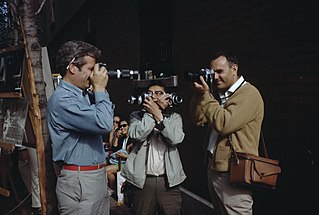
Photography is the art, application, and practice of creating images by recording light, either electronically by means of an image sensor, or chemically by means of a light-sensitive material such as photographic film. It is employed in many fields of science, manufacturing, and business, as well as its more direct uses for art, film and video production, recreational purposes, hobby, and mass communication.

Edwin Muir CBE was a Scottish poet, novelist and translator. Born on a farm in Deerness, a parish of Orkney, Scotland, he is remembered for his deeply felt and vivid poetry written in plain language and with few stylistic preoccupations.

Photojournalism is journalism that uses images to tell a news story. It usually only refers to still images, but can also refer to video used in broadcast journalism. Photojournalism is distinguished from other close branches of photography by having a rigid ethical framework which demands an honest but impartial approach that tells a story in strictly journalistic terms. Photojournalists contribute to the news media, and help communities connect with one other. They must be well-informed and knowledgeable, and are able to deliver news in a creative manner that is both informative and entertaining.

Henri Cartier-Bresson was a French artist and humanist photographer considered a master of candid photography, and an early user of 35mm film. He pioneered the genre of street photography, and viewed photography as capturing a decisive moment.

James Francis "Frank" Hurley was an Australian photographer and adventurer. He participated in a number of expeditions to Antarctica and served as an official photographer with Australian forces during both world wars. He was the official photographer for the Australasian Antarctic Expedition and the Imperial Trans-Antarctic Expedition of 1914–16.

Merchant Taylors' Boys' School, Crosby is a 7–18 boys private day school, located in Great Crosby on Merseyside. The school's motto is that of the Worshipful Company of Merchant Taylors: Concordia Parvae Res Crescunt.

Karl Struss, A.S.C. was an American photographer and a cinematographer of the 1900s through the 1950s. He was also one of the earliest pioneers of 3-D films. While he mostly worked on films, such as F.W. Murnau's Sunrise: A Song of Two Humans and Charlie Chaplin's The Great Dictator and Limelight, he was also one of the cinematographers for the television series Broken Arrow and photographed 19 episodes of My Friend Flicka.
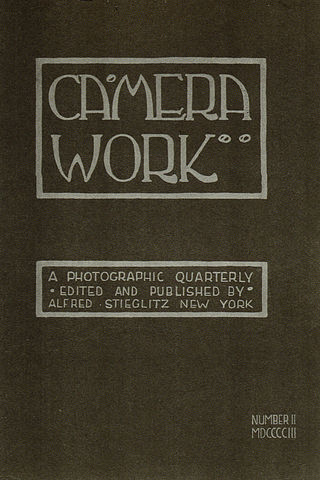
Camera Work was a quarterly photographic journal published by Alfred Stieglitz from 1903 to 1917. It presented high-quality photogravures by some of the most important photographers in the world, with the goal to establish photography as a fine art. It has been called "consummately intellectual", "by far the most beautiful of all photographic magazines", and "a portrait of an age [in which] the artistic sensibility of the nineteenth century was transformed into the artistic awareness of the present day."

James H. Hare was an English photojournalist active between 1898 and 1931. He was the leading photographer during five major wars, and was the driving force behind Collier's becoming a large circulation magazine. Among other conflicts he covered, he photographed the Mexican Revolution (1910-20).

Richard Caton Woodville Jr. was an English artist and illustrator, who is best known for being one of the most prolific and effective painters of battle scenes in the late 19th and early 20th centuries.
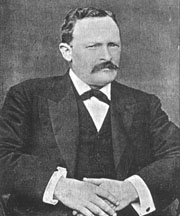
Thomas Horrocks Openshaw was an English Victorian and Edwardian era surgeon perhaps best known for his brief involvement in the notorious Jack the Ripper murders of 1888.

Alfred Watkins was an English businessman and amateur archaeologist who developed the idea of ley lines.
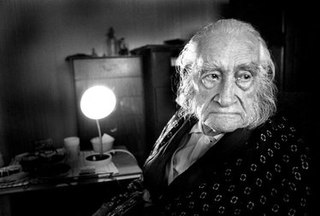
Emil Otto Hoppé was a German-born British portrait, travel, and topographic photographer active between 1907 and 1945. Born to a wealthy family in Munich, he moved to London in 1900 to train as a financier, but took up photography and rapidly achieved great success.
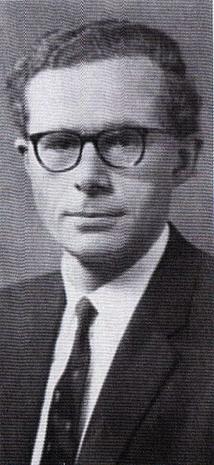
Sir Alan Marshall Muir Wood was a British civil engineer.

Ernest Brooks was a British photographer, best known for his war photography from the First World War. He was the first official photographer to be appointed by the British military, and produced several thousand images between 1915 and 1918, more than a tenth of all British official photographs taken during the war. His work was often posed and formal, but several of his less conventional images are marked by a distinctive use of silhouette. Before and immediately after the war he worked as an official photographer to the Royal Family, but was dismissed from this appointment and stripped of his official honours in 1925, for reasons that were not officially made public.
Charles E. Brown was a commercial aviation photographer working for United Kingdom newspapers, the aviation industry and a freelance commercial photographer with official accreditation as a war correspondent. His aviation archive of 30,000 images has been preserved at the RAF Museum, Hendon since 1978.

John Cyril "Jack" Cato, F.R.P.S. was a significant Australian portrait photographer in the pictorialist style, operating in the first half of the twentieth century. He was the author of the first history of Australian photography; The Story of the Camera in Australia (1955)
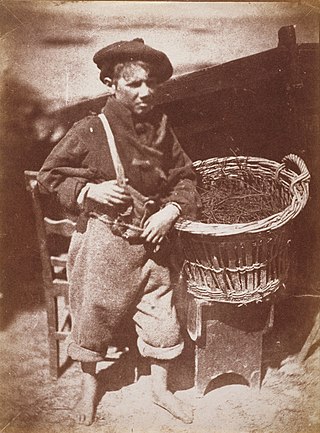
Scotland played a major role in the technical development of photography in the nineteenth century through the efforts of figures including James Clerk Maxwell and David Brewster. Its artistic development was pioneered by Robert Adamson and artist David Octavius Hill, whose work is considered to be some of the first and finest artistic uses of photography. Thomas Roger was one of the first commercial photographers. Thomas Keith was one of the first architectural photographers. George Washington Wilson pioneered instant photography and landscape photography. Clementina Hawarden and Mary Jane Matherson were amongst the first female photographers. War photography was pioneered by James MacCosh, James Robertson, Alexander Graham and Mairi Chisholm.
Thomas John Clapperton FRBS was a Scottish sculptor, famous for the statue of Robert the Bruce at the entrance of Edinburgh Castle erected in 1929.
Harold Philip Clunn was a British shipping agent and non-fiction author known for his topographical works in the Face of... series. Reviewers commented on the exhaustive scope of his work and his unsentimental attitude to the expansion of London and the destruction of its buildings through redevelopment and during the Blitz of the Second World War.